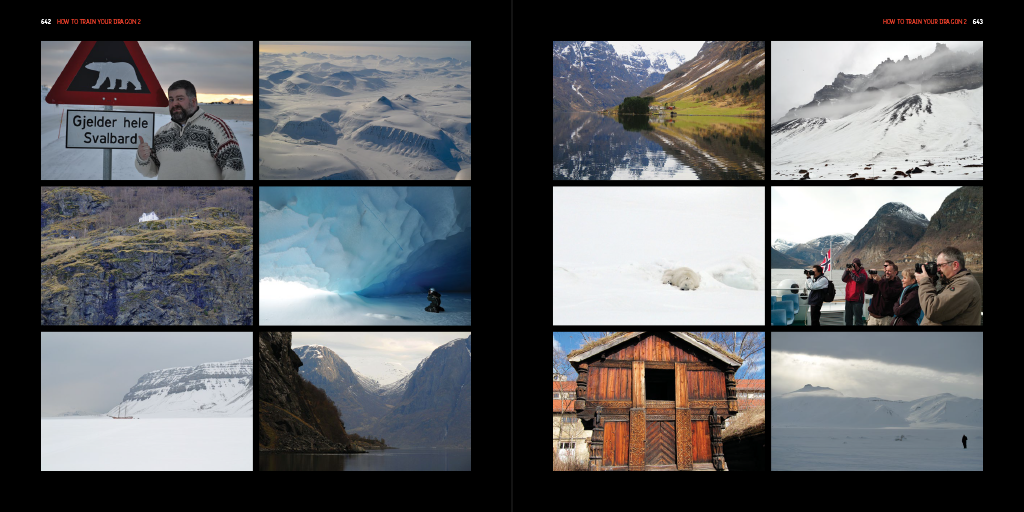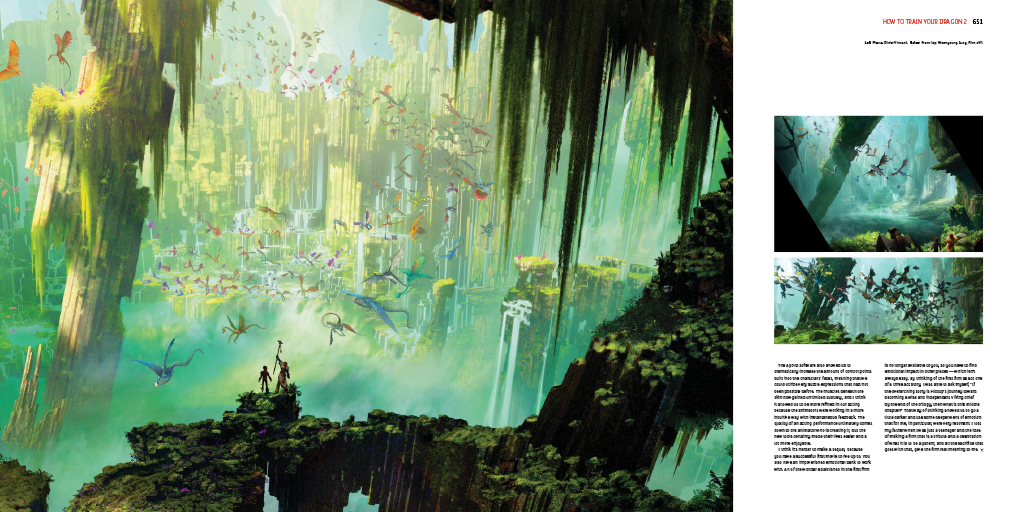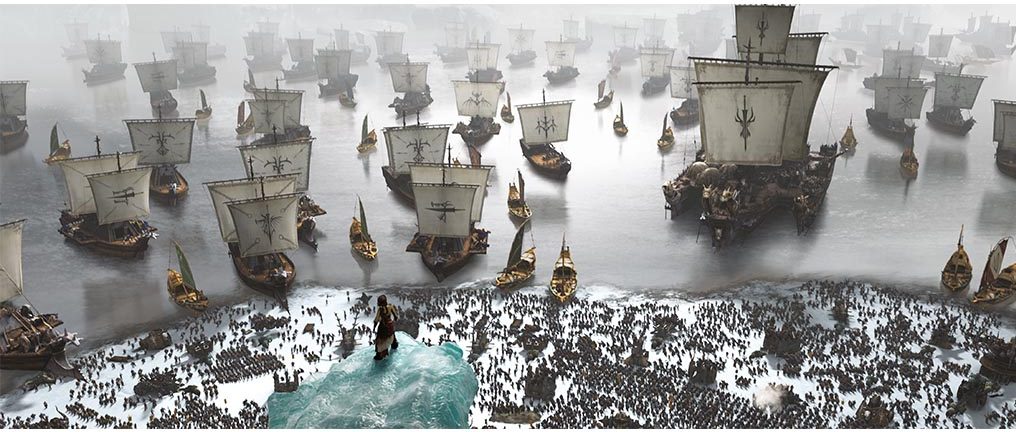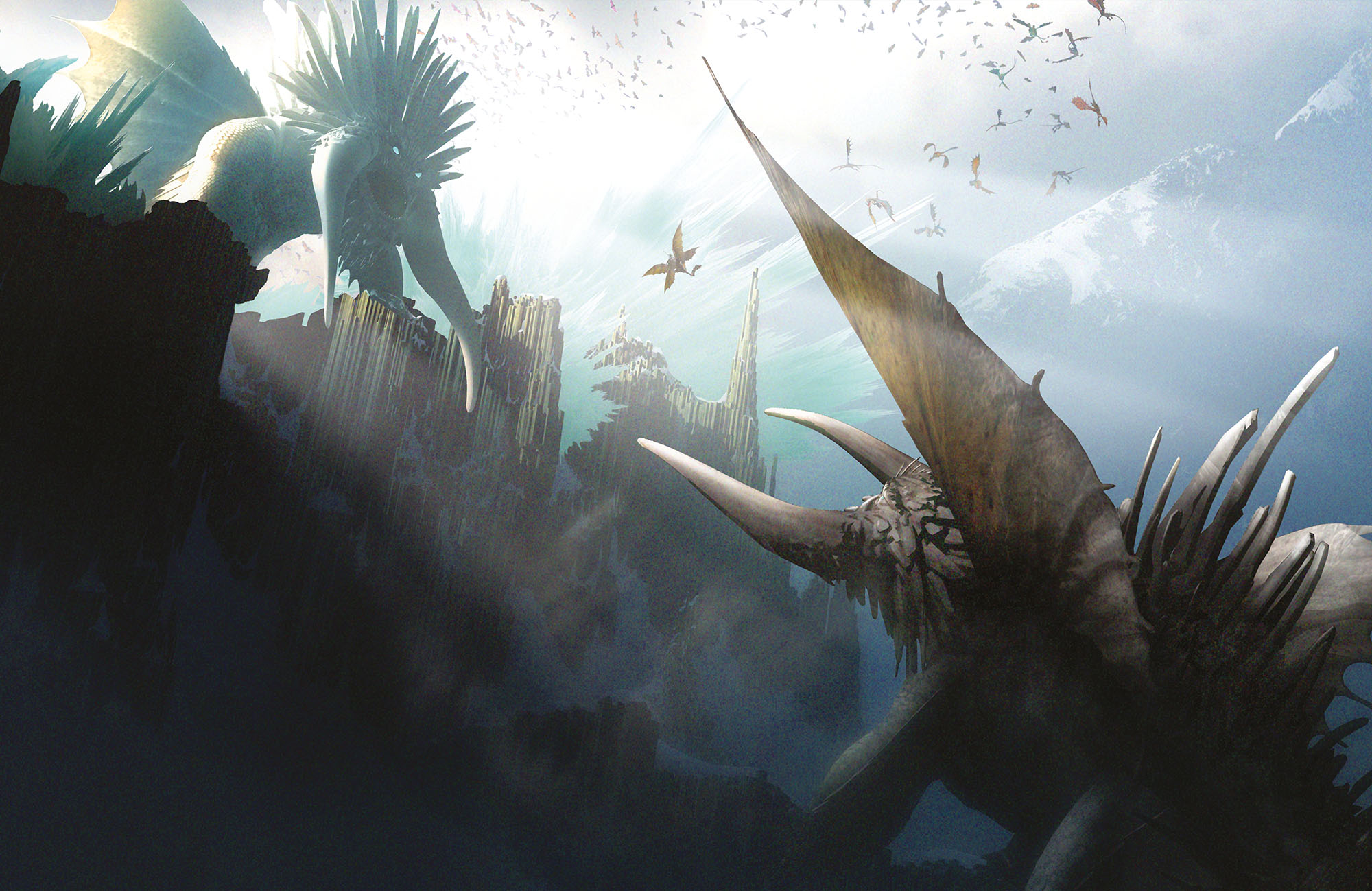Director of the How to Train Your Dragon trilogy, Dean DeBlois, reminisces about his experiences on the second film for The Official DreamWorks Animation Opus.
In between the first and second How to Train Your Dragon films we decided to take a team building and research trip to Norway. We invited along all the heads of our creative departments. The visit was a real exploration of local Viking museums and small villages, just to get a sense of the surroundings, climate and the natural light. At the end of the trip, a smaller group of us travelled north to Svalbard, an archipelago deep into the Arctic — home to 2,000 people and 5,000 polar bears. It was a very strange experience; the scenery was stunning with beautiful glaciers, majestic fjords and breathtaking landscapes, the untouched and pristine icy wilderness.
While out on a six-day snowmobile safari, I found it quite disturbing when it was pointed out to us that we were now prey. Polar bears in Svalbard will essentially eat anything that moves, and it was very unsettling that our guides needed to be so heavily armed. There were quite a few stories of horrible demises, and for the whole time out there we felt very vulnerable and exposed. It was a real adventure, but the photographs and the footage of the mountains that we brought back provided great inspiration for the way we wanted to develop the second movie.

It was during this research trip that we also discussed in more detail the thinking behind the sequel. My deepest concern from the start was simply the “curse” of sequels; they’re so often disappointing and they rarely live up to the standards of the original film. I came up with the idea that rather than just doing a sequel, what if it was the middle part of a larger three-act story, and so commit to the idea of a trilogy even before we’d started work on the second movie.
I also knew that restarting with a new story and still having Hiccup as the main character was going to be a challenge, mainly because the first film took care of all his emotional problems. At the very beginning he was largely ostracized, didn’t have the attention of the girl he pined for or the respect of his father or the tribe. However, Hiccup managed to attain all of those things, as well as befriending an amazing dragon, and so by the end of the first film the character didn’t have any more complications. I thought long and hard about this issue and finally committed to the idea to start the second movie five years after the first one, with Hiccup transitioning from the carefree abandon of childhood into the more serious stakes of adulthood and the responsibilities that come with it.
What if it was the middle part of a larger three-act story, and so commit to the idea of a trilogy even before we’d started work on the second movie.
We introduced Hiccup as an older, wiser and much more impressive individual. He is a better flier now, the hero of his community and an explorer who is pushing the boundaries of his known world and literally extending the map in every direction. His real problem is that he still doesn’t feel cut out to fulfill his father’s role. He has no desire to stay home on Berk and take on the mantle of chief. His journey of restlessness leads to the discovery of the other half of his soul — his long-lost mother — who is living with dragons in the wilds of the north. It’s in this moment of discovery that Hiccup really begins to learn who he is; through the combination of these two parental forces he is able to define himself. Hiccup is faced with both this shocking revelation and also a quandary that feeds into the third film of our trilogy: Is it right to segregate the dragons in order to protect them, or is coexistence a possibility worth fighting for?
We wanted to add a little more danger to the plot of the second film, and that arrives in the shape of our villain, Drago Bludvist. Whilst Hiccup is out searching for new lands and new dragons he discovers a brewing conflict involving a warlord known as Drago, who is assembling a dragon army to take over the world. He has been capturing dragons and conditioning them, but a mysterious figure is thwarting his progress, freeing the dragons and taking them deep into the wilds of the north. This person turns out to be Hiccup’s mother, who was abducted during a dragon raid when he was just a baby and assumed dead. Very much like Diane Fossey or Jane Goodall, she has been living with dragons ever since, learning their ways, discovering their secrets and becoming their protector.

Drago is the enemy of the dragons. We conceived of him as a very ambitious conqueror from an unknown land. Through sheer force and brutality he assembled an army made up from many different nations. He’s a brutish character who’s the complete opposite of Hiccup. He achieves what he wants, including the domination of dragons, through sheer force. We designed Drago to be weathered and scarred, but with an exotic quality to his look featuring a predatory face with a beak-like nose. His design reflects some of the bulky and intimidating villains I have liked in the past, such as Thulsa Doom from the original Conan the Barbarian film, as well as Shan Yu who is the conqueror in Mulan.
There were some important differences between the original and the sequel, and we aimed for them from the outset. First, the themes became a little more mature and we expanded the sense of a grand adventure even further and made the world feel bigger. We introduced many more dragons, and the characters themselves have grown older and are a little more seasoned and sure of themselves. I took my inspiration from The Empire Strikes Back, as far as being a film that took something I loved and expanded upon it in every way possible — in the sense of scope, the sense of adventure and the depth of emotion.
I took my inspiration from The Empire Strikes Back, as far as being a film that took something I loved and expanded upon it in every way possible.
The advancement in technology also gave us extra capabilities for the sequel. The new Apollo animation software enhanced our characters’ emotional performances. How to Train Your Dragon 2 was the first film made using Apollo, and we were able to take advantage of the hugely improved computing power that was gifted to us. This software also gave us the ability to put more dragons and more characters on screen at any one time with significantly more detail. The world itself became much more intense and believable, and I think the sheer ambition of certain sequences, like the battle on the shores of Valka’s dragon mountain, would have been impossible for us to even contemplate previously. Suddenly, we had the ability to create a movie on the scale of an epic live-action film.

The Apollo software also allowed us to dramatically increase the amount of control points built into the characters’ faces, meaning that we could utilize very subtle expressions that had not been possible before. The muscles beneath the skin now gained unlimited subtlety, and I think it allowed us to be more refined in our acting because the animators were working in a more intuitive way with instantaneous feedback. The quality of an acting performance ultimately comes down to the animator who is creating it, but the new tools certainly made their lives easier and a lot more enjoyable.
Suddenly, we had the ability to create a movie on the scale of an epic live-action film.
I think it’s harder to make a sequel, because you have a successful first movie to live up to. You also have an impoverished emotional bank to work with. All of the wonder established in the first film is no longer available to you, so you have to find emotional impact in other places — which isn’t always easy. By thinking of the first film as act one of a three act story, I was able to ask myself, “If the overarching story is Hiccup’s journey toward becoming a wise and independent Viking chief by the end of the trilogy, then what is this middle chapter?” That way of thinking allowed us to go a little darker and use some deeper wells of emotion that for me, in particular, were very resonant. I lost my father when I was just a teenager and the idea of making a film that is a tribute and a celebration of what it is to be a parent, and all the sacrifice that goes with that, gave the film real meaning to me.





